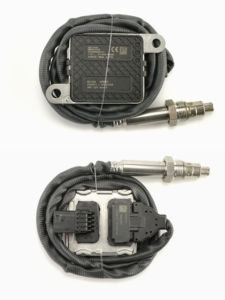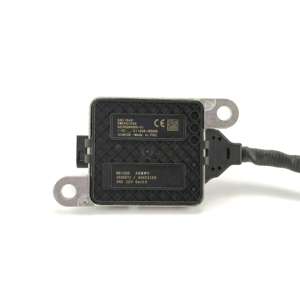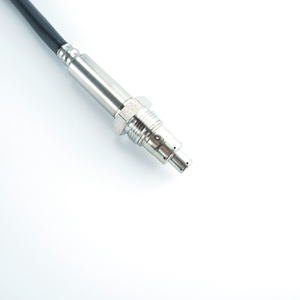(257 products available)





































































































































































































A Cummings map sensor, also known as a manifold absolute pressure sensor, is an electrical sensor that measures the pressure in the engine's intake manifold. It is one of the most important sensors in a Cummins engine control unit. There are two main types of Cummins map sensors:
Other Cummins MAP sensor types are based on their compatibility with different engine models. They include the 6.7 Cummins MAP sensor, the 5.9 Cummins MAP sensor, and the 8.3 Cummins diesel engine sensor. The 6.7 Cummins MAP sensor is used in Dodge Ram trucks with the 6.7-liter inline-six Cummins diesel engines. The 5.9 Cummins MAP sensor is used in Dodge Ram trucks with the 5.9-liter inline-six Cummins diesel engines. The 8.3 Cummins diesel engine is used in heavy-duty trucks and commercial vehicles. The 8.3 Cummins MAP sensor is not electrically compatible with the 6.7 and 5.9 Cummins MAP sensors, which are used in light-duty trucks. Therefore, it is important to choose the right Cummins MAP sensor that matches the engine's specifications and performance requirements.
The specifications of Cummins MAP sensors vary depending on the engine system they are designed for. Generally, they have the following features:
It is important to maintain the Cummins MAP sensor so it can function properly. Here are some maintenance tips:
Choosing the right Cummins MAP sensor can be a daunting task. But it doesn't have to be. Knowing the factors to consider when choosing this sensor makes it easy. Here are the factors:
Vehicle Compatibility
Not all vehicles can use any Cummins MAP sensor. The make, model, and year of a vehicle are essential factors to consider before choosing a Cummins MAP sensor. The vehicle's engine type must also be considered. This is because the engine uses the MAP sensor to measure air pressure in the intake. So, choose a sensor that is compatible with the vehicle.
Quality and Reliability
Go for a high-quality Cummins MAP sensor. This is because it might last longer than others. A high-quality MAP sensor will enhance performance and reliability. The sensor is a critical part of the engine management system. If it is unreliable or faulty, it will cause problems for the engine and affect vehicle performance. The key to choosing a reliable MAP sensor is to source it from trustworthy suppliers.
Budget Considerations
Cummins MAP sensors are available in different price ranges. It is important to have a budget set aside for the purchase. However, do not be quick to choose the cheapest. This does not mean the sensors will not work. But they might not last long or have quality that is below standard. Find a sensor that is within the budget and has quality.
Aftermarket vs. OEM
Original Equipment Manufacturer (Cummins) sensors are more expensive but have quality and reliability. They also have a warranty. On the other hand, aftermarket sensors are more affordable. They also come in a wide range.
Technical Specifications
When choosing a Cummins MAP sensor, pay attention to the voltage output, pressure range, and connector type. These features must be compatible with the vehicle's engine system. Choose a MAP sensor with a voltage output and pressure range that satisfy the needs of the engine.
Seals and Gaskets
The Cummins MAP sensor comes with seals and gaskets. These parts ensure that it fits perfectly and prevents air leaks. Make sure the seals and gaskets are of high quality and compatible with the vehicle.
Installation
Consider how easy it is to install the MAP sensor. Some come with a detailed installation guide. Some sensors are easy to install, while others are not. If looking for a sensor that is easy to install, choose the one with a simple installation process.
Warranty
Check the warranty period of the Cummins MAP sensor. Some have up to 12 months warranty or more. The warranty period shows the manufacturer's confidence in the product.
To replace a Cummins MAP sensor is pretty much straightforward. It is a task that can be done easily with the right tools and a Cummins map sensor replacement. Below are the step-by-step guides on how to replace a MAP sensor.
Firstly, it is important to have the right tools for the job. This includes:
Once the tools are in place, follow the instructions below:
Q1: What does a Cummins MAP sensor do?
A1: The Cummins MAP sensor measures the pressure of the air inside the engine's intake manifold. It is a critical component of the engine's air management system. By monitoring manifold pressure, the Cummins MAP sensor helps the engine control unit (ECU) optimize air-fuel mixture for efficient combustion, ensuring the engine runs smoothly and efficiently under various load and speed conditions.
Q2: Where is the MAP sensor located on a Cummins engine?
A2: The Cummins MAP sensor is typically located on the intake manifold of the engine. The exact position may vary depending on the engine model and year. It is usually mounted on the intake manifold, close to the throttle body, or on a nearby vacuum line. Consult the engine's service manual or wiring diagram to find the exact location for a specific engine model.
Q3: Can a Cummins engine run without a MAP sensor?
A3: While a Cummins engine can technically run without a MAP sensor, it will not perform optimally. The engine control unit (ECU) relies on data from the MAP sensor to manage air-fuel mixtures, control boost pressure in turbocharged engines, and optimize engine performance and emissions. Without a functioning MAP sensor, the ECU may not accurately measure engine load, leading to poor fuel economy, reduced power, increased emissions, and potentially damaging engine components through improper management.
Q4: What are some common symptoms of a failing Cummins MAP sensor?
A4: A failing Cummins MAP sensor can cause various engine performance issues. Common symptoms include:
If any of these symptoms are observed, it is advisable to have the MAP sensor tested and, if necessary, replaced to maintain optimal engine performance.
Q5: Can the MAP sensor be cleaned and reused?
A5: In some cases, a dirty or contaminated MAP sensor can cause performance issues. Before replacing the sensor, it might be worth trying to clean it. Using a gentle, non-corrosive electronic cleaner, carefully clean the sensor's surface. Be very careful not to damage any delicate components inside the sensor while cleaning it. After cleaning, retest the sensor to see if performance has improved. If not, replacing the sensor with a new one is generally recommended instead of trying to reuse an old, degraded sensor.
The web search volume for the keyword "cummins map sensor" shows a monthly average of 260 web searches, with a significant one-year change of 88%. Over the past three months, the web search volume has remained stable with a 0% change. The data from the past twelve months reveal fluctuating interest, with peaks in September and November reaching 320 web searches, and valleys in February and October at 170 web searches.
Analyzing the monthly search data, it's evident that the interest in "cummins map sensor" experiences noticeable fluctuations throughout the year. The peaks in September and November could indicate a seasonal trend, possibly linked to specific times of the year when vehicle owners and mechanics are more inclined to perform maintenance or upgrades. Conversely, the dips in February and October suggest a lower demand or possibly a shift in consumer focus towards other vehicle parts or accessories during these months.
The overall increase in yearly web search volume by 88% suggests a growing interest in this specific vehicle part. This trend could be influenced by various factors including increased awareness among vehicle owners about the importance of this sensor, or possibly a rise in issues with these sensors in the field, prompting more web searches for replacements or repairs. The data highlights the importance of monitoring consumer behavior changes and market dynamics in the vehicle parts and accessories category.